Abstract
This study examines the characteristics that discriminate between ownership types among private, freestanding psychiatric inpatient facilities in the United States. Use of data from the Inventory of Mental Health Organizations (National Institute of Mental Health 1983, 1986), revealed that not-for-profits provide more services and serve more of the underinsured, while for-profits serve the better insured, concentrate primarily on inpatient services, and serve more children, adolescents, and substance abusers. A surplus bed capacity among for-profit psychiatric hospitals is presumed to contribute to lower occupancy rates and less turnover in the for-profit sector. Not-for-profit psychiatric facilities are also found to be more involved in professional training and to be more accessible through emergency services. However, the misclassification test in the discriminant procedure reveals that a significant group of not-for-profit facilities looks more like its for-profit counterpart group than like other not-for-profits. Study findings are interpreted both in terms of debates over the tax-exempt status of not-for-profit hospitals and the potential negative service effects of proprietization.
Full text
PDF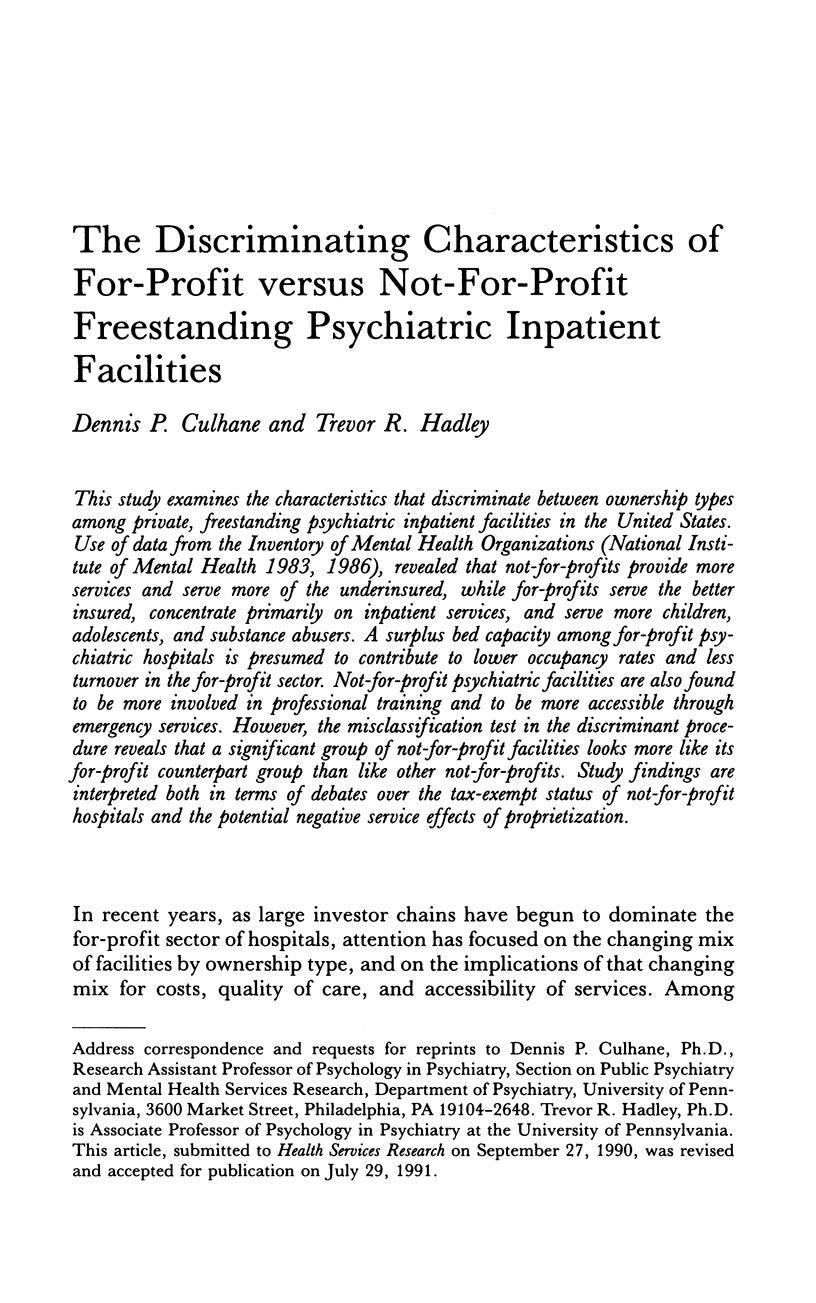



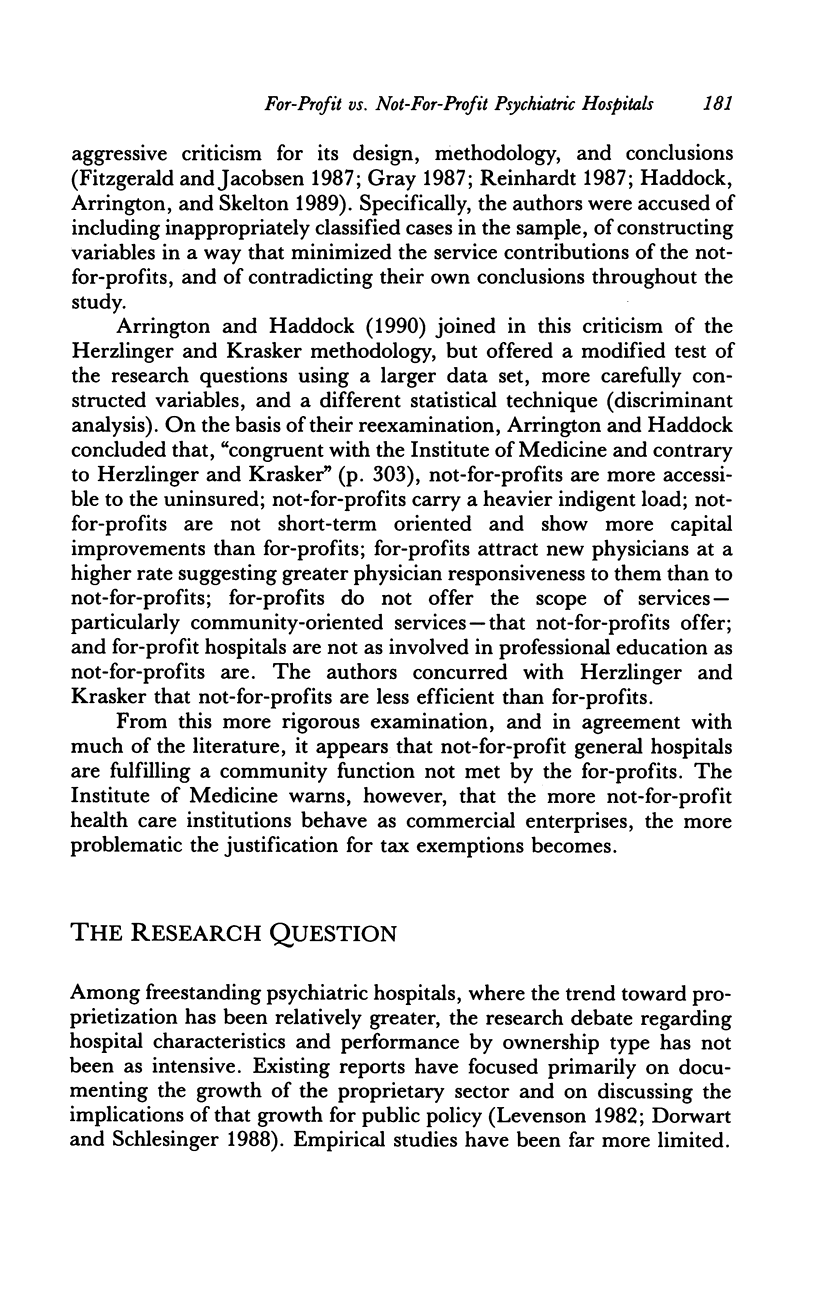








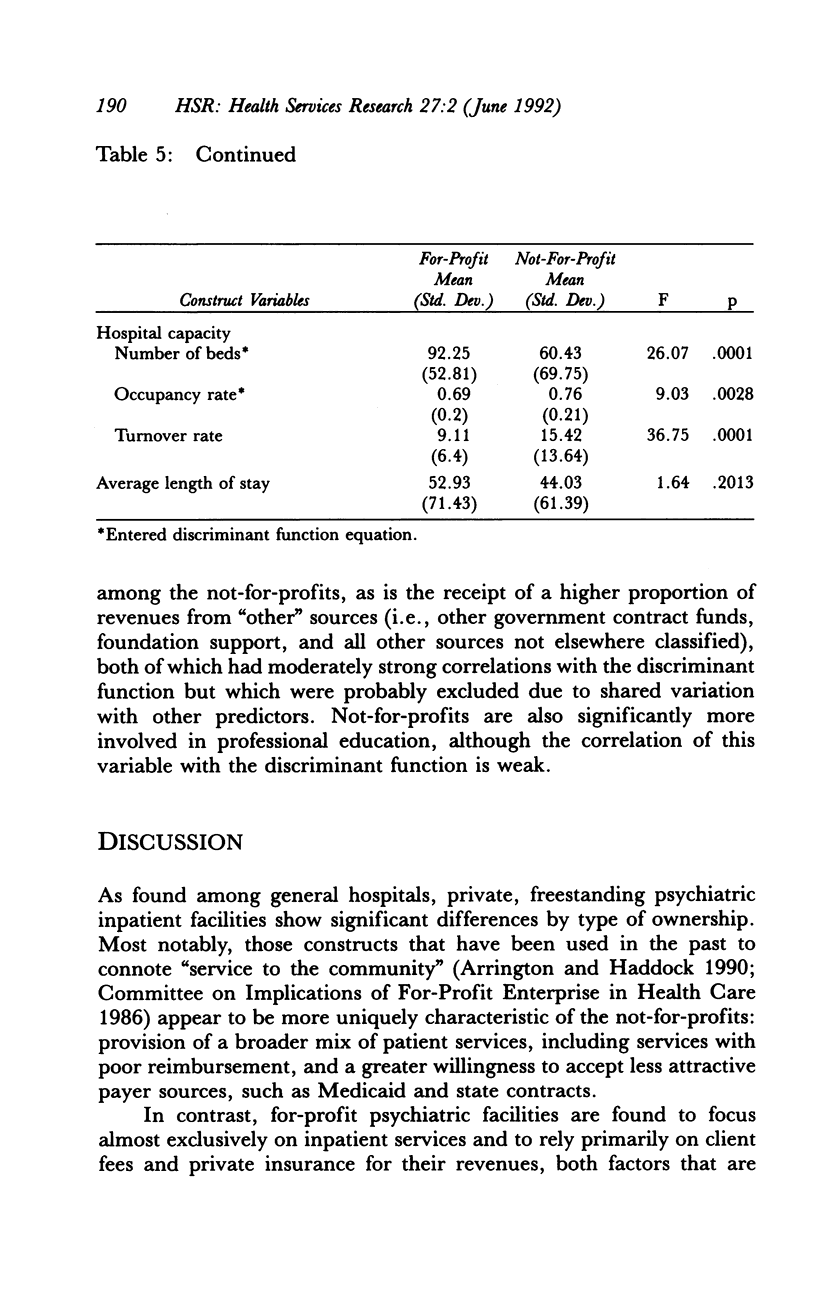
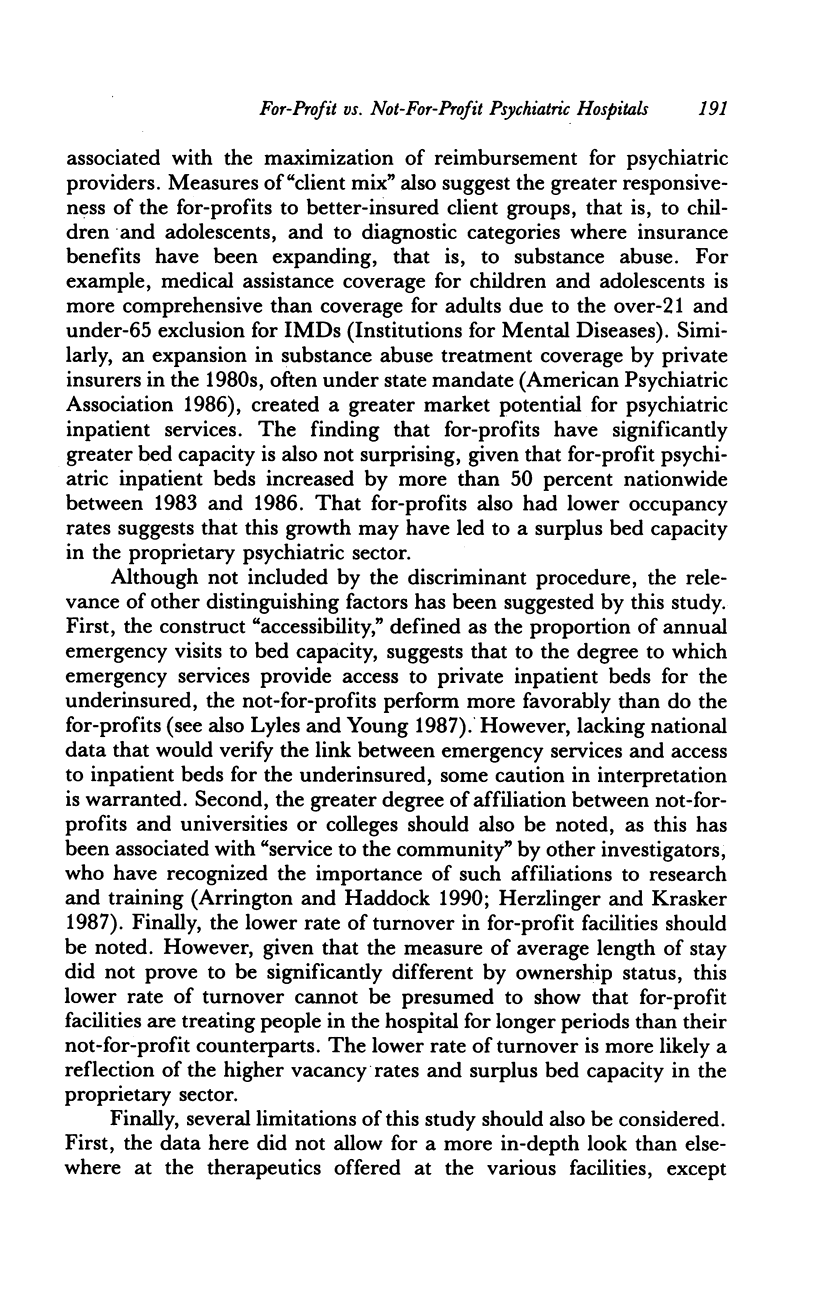

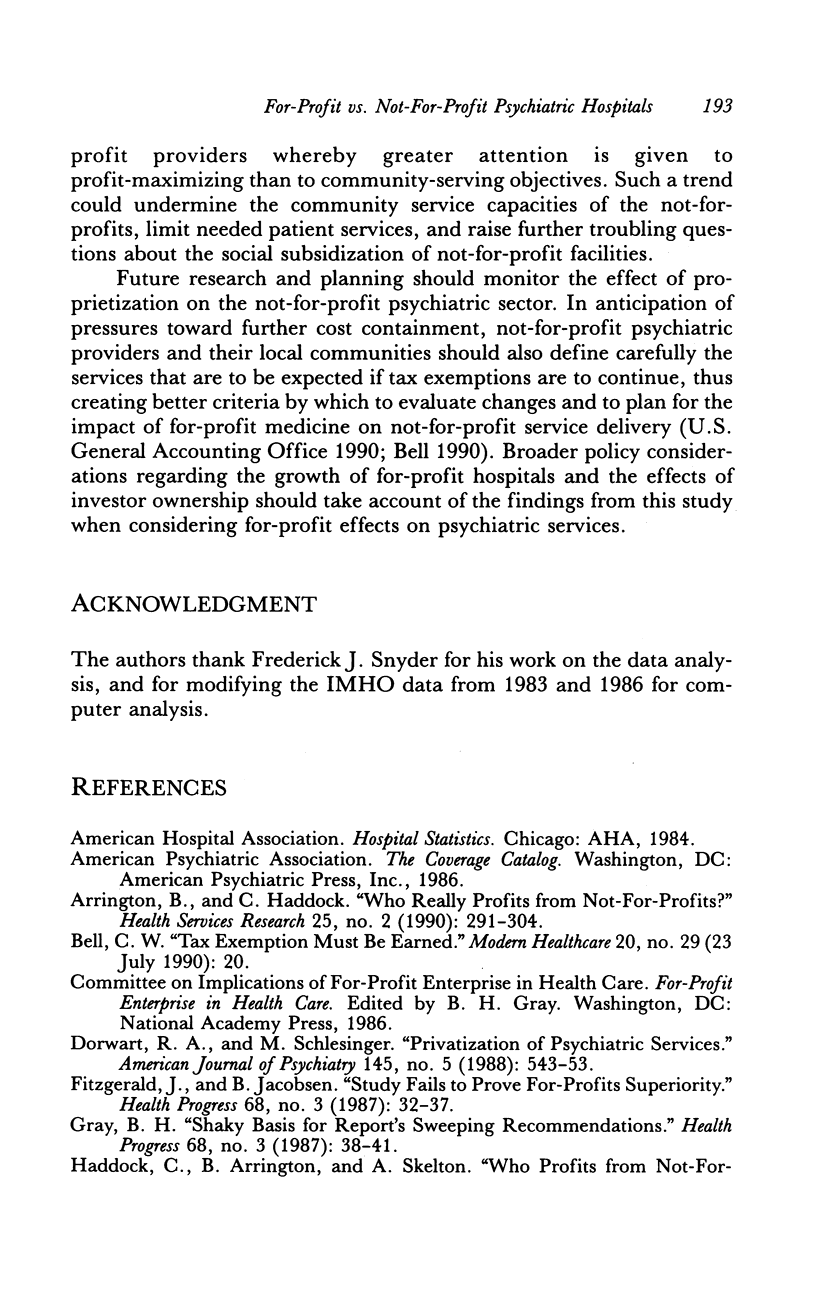

Selected References
These references are in PubMed. This may not be the complete list of references from this article.
- Arrington B., Haddock C. C. Who really profits from not-for-profits? Health Serv Res. 1990 Jun;25(2):291–304. [PMC free article] [PubMed] [Google Scholar]
- Dorwart R. A., Schlesinger M. Privatization of psychiatric services. Am J Psychiatry. 1988 May;145(5):543–553. doi: 10.1176/ajp.145.5.543. [DOI] [PubMed] [Google Scholar]
- Fitzgerald J., Jacobsen B. Study fails to prove for-profits' superiority. Health Prog. 1987 Apr;68(3):32–37. [PubMed] [Google Scholar]
- Gray B. H. Shaky basis for report's sweeping recommendations. Health Prog. 1987 Apr;68(3):38–41. [PubMed] [Google Scholar]
- Herzlinger R. E., Krasker W. S. Who profits from nonprofits? Harv Bus Rev. 1987 Jan-Feb;65(1):93–106. [PubMed] [Google Scholar]
- Levenson A. I. The growth of investor-owned psychiatric hospitals. Am J Psychiatry. 1982 Jul;139(7):902–907. doi: 10.1176/ajp.139.7.902. [DOI] [PubMed] [Google Scholar]
- Lyles C. A., Young J. P. Hospital ownership and psychiatric services. Implications of ownership and reimbursement changes on lengths of stay and availability of services. J Med Syst. 1987 Feb;11(1):45–57. doi: 10.1007/BF00992599. [DOI] [PubMed] [Google Scholar]
- McCue M. J., Furst R. W. Financial characteristics of hospitals purchased by investor-owned chains. Health Serv Res. 1986 Oct;21(4):515–527. [PMC free article] [PubMed] [Google Scholar]
- Michel A., Shaked I., Daley J. The proprietary hospital industry: a financial analysis 1972-1982. Soc Sci Med. 1985;21(3):235–242. doi: 10.1016/0277-9536(85)90097-8. [DOI] [PubMed] [Google Scholar]
- Reinhardt U. E. Flawed methods cripple study on not-for-profits. Hospitals. 1987 Apr 20;61(8):136–136. [PubMed] [Google Scholar]
- Salmon J. W. Profit and health care: trends in corporatization and proprietization. Int J Health Serv. 1985;15(3):395–418. doi: 10.2190/HK8W-3B1Q-UWJQ-6DEW. [DOI] [PubMed] [Google Scholar]
- Schlesinger M., Dorwart R. Ownership and mental-health services. A reappraisal of the shift toward privately owned facilities. N Engl J Med. 1984 Oct 11;311(15):959–965. doi: 10.1056/NEJM198410113111506. [DOI] [PubMed] [Google Scholar]


